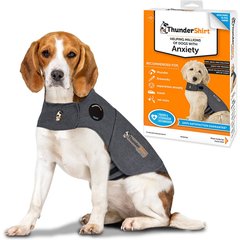Have an Introverted Dog? Here’s How To Help Them Be More Confident
We love our furry best friends for their waggy-tailed, happy-go-lucky approach to life. Our dogs are basically optimism on four paws, ready to greet the world with a cheerful smile.
But that’s not always the case. Some reserved dogs prefer to watch life from the sidelines rather than being a part of the action. An afternoon at the dog park? No thanks. Hanging out at a party? Pass. These shy pups defy the stereotype of the “typical” dog, but that doesn’t mean they’re abnormal. Whether through nature, nurture, or a combination of both, some dogs just happen to be loners.
Key Takeaways
- A shy dog shows timid or seemingly “antisocial” behaviors that fall outside of the reactions we typically expect of dogs.
- Both genetics and life experiences play a role in the way a dog’s behavior develops.
- Introverted dogs may cower, hide, avoid eye contact, lick their lips, and whine.
- There are ways pet parents can help introverted dogs become more confident and less stressed.
What Is a Shy Dog?
“Shy dog” is a catchall term that encompasses many different types of canine behavior. For example:
-
A puppy who hangs back and doesn’t play during socialization class might be considered shy.
-
A dog who retreats to a bedroom when guests visit could be thought of as reserved.
-
A low-energy rescue pup might be considered an introverted dog.
“Shy” can include any timid or seemingly “antisocial” behaviors that fall outside of the reactions we typically expect of our dogs.
That said, reserved dogs might only act withdrawn in certain scenarios, such as when they feel overwhelmed. Shy dogs might be perfectly happy in environments where they feel comfortable, such as at home or on familiar walks around the block.
Shop Toys, Training and More
- ThunderEase Powered by ADAPTIL Calming Pheromone Collar for Dogs, Small, up to 14-in neck$19.99Chewy Price
- Nutramax Solliquin Soft Chew Calming Behavioral Health Supplement for Small/Medium Dogs & Cats, 75 count$19.99Chewy Price
- ThunderShirt Classic Anxiety & Calming Vest for Dogs, Heather Grey, Medium$41.64Chewy Price
- Purina Pro Plan Veterinary Diets Calming Care Liver Flavored Powder Calming Supplement for Dogs, 30 count$33.99Chewy Price
Why Are Some Dogs Shy or Introverted?
Most pet parents adopt a new dog with the best intentions, ready to do everything possible to help their new best friend grow into a well-adjusted, confident dog. But it’s important to understand that both genetics and life experiences play a role in the way a dog’s behavior develops.
A dog’s temperament is influenced by a combination of different factors, including:
-
Traits inherited or learned from their parents
-
The amount and quality of early socialization
-
Their environment
-
Ongoing socialization as the dog matures
-
Their level of daily exercise
-
What they eat
All of these can play a part in how a canine personality develops over time.
Does Breed Play a Role?
While a dog’s breed isn’t a guarantee of behavior (Labradors who hate swimming do exist!), there are some breeds that are known to be more reserved than others.
Dogs who were bred to work solo, such as livestock guarding dogs like Anatolian Shepherds and some working group dogs like Akitas, can be more introverted than other dogs. That said, there are always exceptions to breed-specific behaviors, so it’s possible for the usually aloof Shar-Pei to be snuggly or for a typically outgoing Golden Retriever to prefer their alone time.
What Does a Shy or Reserved Dog Look Like?
Nervous dogs can exhibit behaviors that range from shutting down to being seemingly aggressive. The level of reaction can vary depending on the intensity of the trigger. This means that a shy dog might cower if the thing that’s frightening them is at a distance, then resort to barking and growling as the scary trigger gets closer in an attempt to keep it away.
Typical shy, nervous, or frightened dog behaviors include:
-
Cowering
-
Hiding
-
Avoiding eye contact
-
Low posture
-
Tucked tail
-
Lip licking
-
Yawning
-
Flattened ears
-
Whining
-
Pacing
-
Trembling
-
Barking while backing away
-
Low energy/no energy
Some shy dog behaviors, such as avoiding eye contact and yawning, can be tough to notice. It’s important that pet parents take time to observe their pup and get to know their dog’s body language. It’s easy to assume that a quiet, low-energy dog is feeling OK, but those types of “shutdown” behaviors might be masking anxiety.
How To Help an Introverted Dog
Want to help your shy pup gain some confidence? The following tips are for both ends of the leash, so you and your introverted dog can learn to navigate the world with less stress.
1. Check Yourself
It’s tempting to try to model bold behavior for your shy dog, but being boisterous can backfire. Instead, when your dog seems uncomfortable, speak in a soft voice, move slowly, and observe your dog’s body language for insight into how they’re feeling.
Remember that our dogs have good days and bad days too, so be prepared to modify your behavior as needed.
2. Be Your Dog’s Advocate
Let your dog set the pace for interactions with others. If you know your dog doesn’t enjoy meeting people during walks, intervene before well-meaning strangers come over to say hello.
It’s not always easy to prevent a greeting, but saying something like, “My dog is recovering from an illness” or “We’re in training,” can make the interaction feel less awkward for introverts on the human end of the leash.
3. Use Positive Reinforcement Training
All dogs benefit from positive reinforcement training, but reserved dogs in particular require the confidence boost that comes with this science-backed methodology. Avoid using any training methods that employ harsh verbal or physical corrections, especially those involving tools such as choke, electric, or prong collars. Training should always be a fun, positive experience for your dog.
Training should always be a fun, positive experience for your dog.
4. Play Confidence-Building Games
Play training is a stealthy way to help your shy dog feel less anxious—after all, it’s tough to be worried when you’re having a good time!
Games that tap into your dog’s natural instincts, such as “find the treat” or “find the toy,” can encourage your dog to ignore potential stressors and focus on the fun. For example, if your dog starts to look anxious about something in the distance during a walk, you can scatter a handful of treats on the ground and encourage them to scoop them all up, then walk in a different direction. Or, if your dog is concerned about construction noises outside, hide a favorite plush toy and get them to focus on finding it.
5. Begin a Desensitization and Counter-Conditioning Program
When it comes to training anxious dogs, there’s no tool more powerful than desensitization and counter-conditioning. This combination helps dogs form a new association to stressors by linking them to something positive.
For example, if a dog is nervous around men in hats, pet parents can plan a training session with a man wearing a hat at a distance that’s far enough away to not evoke a fear reaction in the dog. Feed the pup a series of high-value treats while the dog observes the man at a distance—this helps the dog begin to connect the scary person with special goodies. Then slowly move closer to the man, all while feeding treats and making sure the dog’s body language is relaxed and confident.
This slow and steady training changes a dog’s emotional response to a stressor over time, and it moves at a pace that keeps the reserved dog in a calm emotional state. Be aware that this process may take time and patience, as each dog will progress at their own pace.
6. Consider Hiring a Certified Trainer or Veterinary Behaviorist
Feeling overwhelmed? Consider working with a trainer to help design a confidence-boosting program. Look for a professional who uses positive reinforcement training and is willing to work with both your dog and you.
A shy, nervous, or insecure dog pushed to the limit can become a reactive dog, so it’s best to get help early to prevent behavioral challenges from worsening.
7. Love the One You’re With
You’ve got a shy dog, and that’s OK! If your pup doesn’t seem overly stressed in your everyday life together and their behavior doesn’t bother you, it’s perfectly fine to carry on.
Your dog doesn’t have to interact with strangers or other dogs in order to live a rich and fulfilling life. As long as you’re navigating the world as a bonded team and you’re aware of how your dog is reacting by keeping track of their body language, letting a canine introvert do their own thing is totally fine!
Featured Image: Adobe/teamjackson




